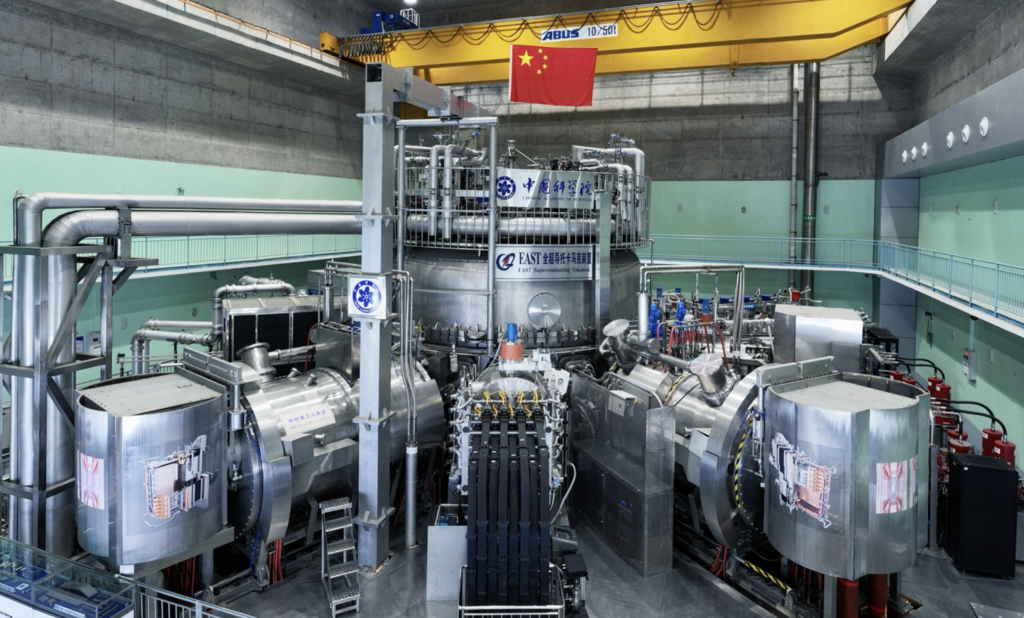http://english.cas.cn/head/202501/t20250121_899060.shtml
The Experimental Advanced Superconducting Tokamak (EAST), commonly known as China’s “artificial sun,” has achieved a remarkable scientific milestone by maintaining steady-state high-confinement plasma operation for an impressive 1,066 seconds. This accomplishment, reached on Monday, sets a new world record and marks a significant breakthrough in the pursuit of fusion power generation.
The duration of 1,066 seconds is a critical advancement in fusion research. This milestone, achieved by the Institute of Plasma Physics (ASIPP) at Hefei Institutes of Physical Scienece (HFIPS) of the Chinese Academy of Sciences, far surpasses the previous world record of 403 seconds, also set by EAST in 2023.
The ultimate goal of developing an artificial sun is to replicate the nuclear fusion processes that occur in the sun, providing humanity with a limitless and clean energy source, and enabling exploration beyond our solar system. Scientists worldwide have dedicated over 70 years to this ambitious goal. However, generating electricity from a nuclear fusion device involves overcoming key challenges, including reaching temperatures exceeding 100 million degrees Celsius, maintaining stable long-term operation, and ensuring precise control of the fusion process.
ITER, currently under construction in southern France, is set to become the world’s largest magnetic confinement plasma physics experiment and the largest experimental tokamak nuclear fusion reactor upon completion. China officially joined the International Thermonuclear Experimental Reactor (ITER) program in 2006 as its seventh member. Under the agreement, China is responsible for approximately 9 percent of the project’s construction and operation, with ASIPP serving as the primary institution for the Chinese mission.
In Hefei, Anhui Province, China, where EAST is loacated, a new generation of experimental fusion research facilities is currently under construction. These facilities aim to further accelerate the development and application of fusion energy.

